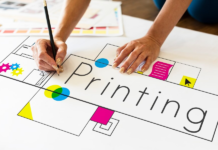After bringing home an adorable fluffball who has satin-like soft ears and the most adorable doe-like eyes, you must wonder what the first thing you should be teaching him is. Firstly one should never underestimate the learning abilities of a puppy. From basic manners like responding to his name and potty training to enhancing socialization skills, training a puppy can make him a good family pet and your best friend forever. Setting the right expectations is very important so that your puppy can have confidence in meeting the goals that have been laid down for him to grow as a wholesome dog. In this article from Ridgeside K9 NorCal Dog Training, let us dive into certain things that you can teach the new member of your family so that they become the dog that you have always wanted by your side.
5 First Things That You Should Teach Your Dog:
Potty training
Potty training should be the first thing you teach your new dog for the sake of your floors. Before you begin, think about your living conditions and your puppy’s vaccination schedule, but there are three basic steps to potty training a dog. To begin, take your dog to their preferred location for potty. Use a catchphrase like, “Go potty,” then praise and treat your dog when they do potty in the proper spot. The second thing you should know is what to do if your dog commits a mistake. If your puppy is raising a leg or squatting on the carpet, softly interrupt them and send them outdoors to their designated pee area, or you can buy a training pad from Scoochie Pet. If you don’t observe your dog having an accident, clean it up and wait for the next one.No amount of yelling will get through your dissatisfaction with their toilet choice. Surveillance is the key. The more accidents your dog has that you aren’t aware of, the more they learn that it’s okay to do the deed inside the house.
Responding to their name
The name you give your puppy will be his lifelong bonding link to you. The name of your puppy is much more than just a name. The goal of naming your dog is to persuade him to look at you and pay attention to you. As a result, it can be said that your dog’s name is a command. You want to give your puppy’s name some value at this point in his life. Reward your dog with a treat or praise every time you say his name. Calling a puppy’s or dog’s name and rewarding him with praise and goodies as soon as he looks at you is a clear process of training. Repeat this process numerous times, then rest for a while. You will see your puppy reacting to their name in a few days to a week.
Guarding
Puppies have a natural need to defend the things they care about, such as food, toys, and their fellow family members. Taking items away from your dog while they are enjoying them encourages them to defend the objects rather than give them up. Instead, try guiding your dog to a different object in order to get rid of the first one or trade them for something else.
Socialization
Socialize your puppy as soon as possible; this will help in the development of a well-balanced dog. Your dog’s ease and comfort in each circumstance he may experience during his life is the goal of socialization. Going to the vet, loud noises like fireworks, the working sound of the vacuum cleaner, body handling, people of all sizes, and yes, other dogs are just a few of the things that might be stressful. Between the ages of 3 and 16 months, a limited window is considered the optimal time to socialize a puppy. Introduce your dog to new sights, sounds, and scents regularly. You don’t want to overload your new dog, so take it slowly. Introduce your puppy to new people in a variety of scenarios, and take her out in public to expose her to even more new sights, sounds, and scents.
Crate training
All dogs should be allowed to stay in their crates. Crate training is a great technique to teach your dog to be alone, but whether you use it or not, the idea is to introduce the notion of being alone gradually. A crate provides a safe environment for your puppy and may also be required in the event of an emergency. Start with five minutes and progressively raise the time to a full 60 minutes if it goes well. Don’t forget about your dog’s potty schedule, but they will need to grow used to being left alone throughout the day. Crate training should begin as soon as your puppy is old enough to be comfortable in one.


























